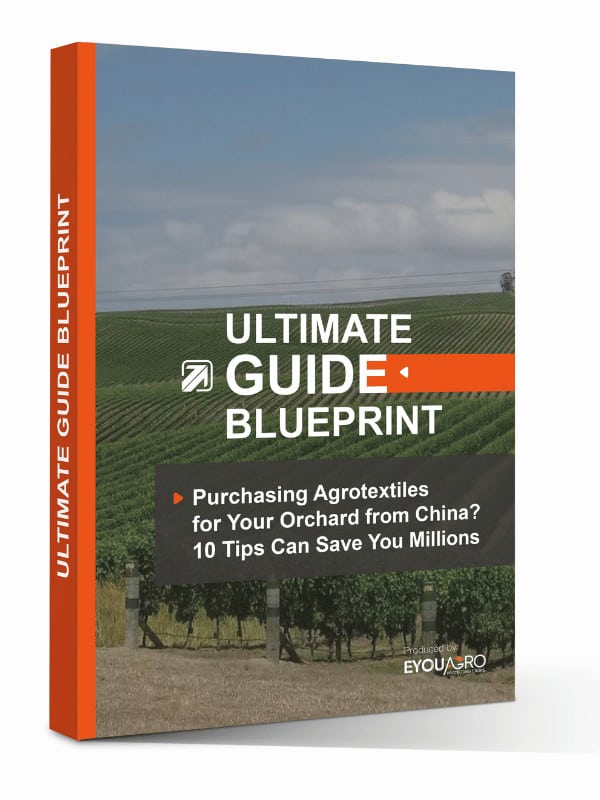Introduction
Bale netwrap is an essential tool for farms and grasslands. Understanding its optimum usage is crucial for efficiency and cost-effectiveness. This blog post aims to provide wholesalers, grasslands, and farms with the necessary knowledge for successful operation with bale netwrap.
Understanding Bale Netwrap
Bale netwrap is a durable, weather-resistant material used to bind and protect hay, straw, and other materials into a compact, manageable shape for easy transportation and storage. It increases the density of bales, hence reducing the cost of transportation. For effective usage, the netwrap must be correctly fed into the baler, applied with tension during the binding process, extended across the full width of the bale, and cut upon completion of the binding cycle.
The Essential Requirements for Successful Operation with Netwrap
Successful operation with netwrap involves four fundamental requirements. First, the netwrap must be fed correctly into the baler. This ensures it is well-positioned to wrap around the bale properly. Second, tension must be applied to the netwrap during the binding process to secure the material tightly, ensuring the final product’s stability and integrity. Third, the netwrap must extend across the full width of the bale to provide full coverage and protection. Lastly, the netwrap must be cut upon completion of the binding cycle to separate the finished bale from the roll of netwrap.

Exploring the Baler’s Feed System
Most balers employ a combination of rubber and steel rollers featuring adjustable settings on either side. It’s essential to balance these adjustments on both sides to ensure a consistent feeding pressure is maintained between the rollers. This balance helps prevent issues such as uneven feeding or excessive pressure on one side, which can lead to suboptimal bale formation.
The baler’s feed system is a crucial mechanism that correctly guides the netwrap into the baler. This mechanism is essential for securing the netwrap in the correct position for effective binding.
A crucial aspect of maintaining the feed system is ensuring the rollers are well-aligned and parallel.
To verify the alignment of the rollers, you can perform a simple test using a sheet of paper. Here’s how:
- Introduce a sheet of paper between the rollers and engage them to pull the paper inwards.
- If the rollers are in good condition, they should slowly spin as you try to remove the paper.
- Repeat this check along the entire width of the roller. It should consistently offer the same resistance when you attempt to pull out the paper.
- If the paper is easier to extract on one side than the other, it indicates the need to adjust the roller’s alignment.
Remember, it is essential to maintain a clean and functional feed system for efficient operation. Blockages or damages could lead to improper feeding of the netwrap, resulting in sub-optimal bale formation. Regular maintenance and checks can help you avoid such issues and ensure successful operation with netwrap.

Understanding the Baler’s Tension System
The baler’s tension system is indispensable in the successful operation with bale netwrap. The system must apply appropriate pressure on the netwrap during the feed process to ensure optimal results. This pressure guarantees the net wrap’s even distribution across the bale, secures its attachment to the bale, and enables the cutting mechanism to sever the net after binding neatly.
The brake system, a key component of the tension system, must be perfectly adjusted and functioning to maintain uniform and complete tension throughout the netwrap’s width. Depending on your baler’s make and model, the tension system could include different elements:
- A pressure-applying spring-tension metal bar that operates on the surface of the netwrap roll.
- A brake mechanism that works against the feeding rollers to control the speed and tension.
- A disc brake and brake pad system grips the interior of the netwrap roll’s cardboard core to maintain constant tension.
Each of these components plays a unique role in maintaining tension and must be regularly checked and adjusted as needed for the most efficient operation. Remember, the tension system’s regular maintenance is a fundamental step in ensuring a smooth, secure, and even application of the bale netwrap.
Potential Issues with Bale Netwrap in a Baler and their Solutions
Despite careful operation, issues may arise with bale netwrap in a baler. Some common problems include uneven distribution of netwrap, difficulty in cutting the netwrap after binding, and inadequate tension. These can often be addressed by adjusting the tension system, regularly maintaining and cleaning the feed system, and ensuring the cutting mechanism is sharp and properly aligned.

Troubleshooting Common Issues with Baler Operation
1) Failure in Net Feeding
a. Mismatched adjustments of feed rollers
- Solution: Ensure that the feed rollers are uniformly adjusted and tightly positioned next to each other.
b. Incorrect netwrap brake tension setting
- Solution: Review the netwrap brake tension and make necessary adjustments to achieve proper tension.
c. Obstruction of Netwrap roll within the net box
- Solution: Check the netwrap roll’s core for moisture or damage and clear any blockages in the net box.
d. Inadequate cut from the previous bale causing inconsistent net feed
- Solution: Examine and adjust the brake tension to ensure a sharp and clean cut of the net.
2) Net Wrapping Around Feed Rollers
a. Extended tails of net winding on rollers
- Solution: Inspect the cut from the previous bale and adjust tension as needed to prevent extended tails.
b. Dirty or impaired feed rollers
- Solution: Clean or replace the feed rollers to maintain proper functionality.
3) Net Not Spreading
a. Inadequate netwrap brake tension
b. Blockage in net box or along the net feed route
c. Extended tails of net from the previous bale drawing net in from the edge
- Solution: Examine and adjust the netwrap brake tension to ensure a neat and even spread of the net.
4) Bales Bursting
a. Insufficient netwrap applied to the bale
b. Netwrap embedded inside the bale, leaving only some netwrap on the bale surface
c. Slow bale ejection from the baler causing damage to the net on the bale surface
d. Damage to the bale on the tailgate or kicker bar upon ejection
e. Overextension of netwrap on the bale, leading to the separation of the Warp-tapes
Solution
Ensure proper application of netwrap, check for any internal netwrap embedding, and ensure smooth and timely bale ejection to avoid damage. Pay attention to proper tension to prevent overextension of netwrap.
By addressing these common issues and implementing the provided solutions, you can enhance the performance and efficiency of your baler, ensuring successful operation with bale netwrap and achieving high-quality bales. Regular maintenance and troubleshooting will help prevent these problems and maximize the effectiveness of your baling process.

FAQs
How do I know if my baler’s feed system is correctly aligned?
A: You can verify the alignment of the feed system by inserting a sheet of paper between the rollers. By attempting to pull the paper out while the rollers are engaged, you should experience a consistent resistance across the entire width of the roller. If the resistance varies, it indicates a need for adjustment.
What role does the tension system play in a baler?
A: The tension system in a baler applies pressure on the netwrap as it’s fed into the system. This pressure is essential to ensure the netwrap distributes evenly across the bale, attaches securely to the bale, and allows for a clean cut after binding.
How do I maintain the brake system in my baler’s tension system?
A: Depending on your baler’s model, the brake system could include a spring-tension metal bar, a brake mechanism against the feeding rollers, or a disc brake and brake pad system. Each of these components needs regular checking and adjustment to ensure the most efficient operation.
What should I do if the netwrap is not distributing evenly across the bale?
A: If the netwrap is not distributing evenly, it’s likely due to issues with the tension system. Check for proper alignment and functionality of the components of the tension system. Also, ensure that the brake system is adjusted correctly to apply consistent tension.
How often should I check and maintain the feed and tension systems in my baler?
A: Regular maintenance is key for optimum performance. We recommend checking these systems before each use to avoid potential problems during operation. Remember, preventative maintenance can save time and costs in the long run.
Conclusion
Understanding your baler and how to operate it effectively with bale netwrap is vital for productivity and cost-efficiency. By following the guidelines and advice provided in this blog post, you can ensure successful operation with bale netwrap and overcome common issues that may arise.
EyouAgro is a leading manufacturer of agricultural solutions, including high-quality bale netwrap. We pride ourselves on delivering innovative and reliable products that enhance efficiency and productivity in the farming industry. With our expertise and commitment to customer satisfaction, we are the trusted choice for wholesalers, grasslands, and farms worldwide.
Contact us now!









